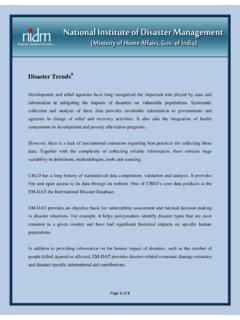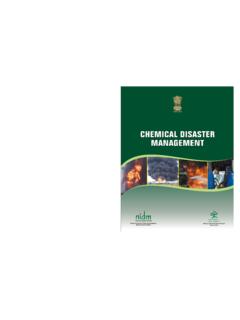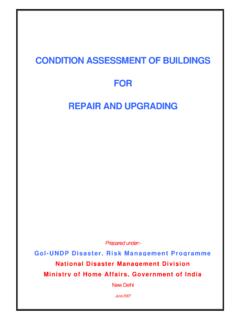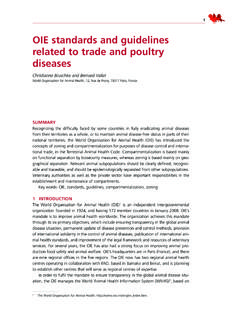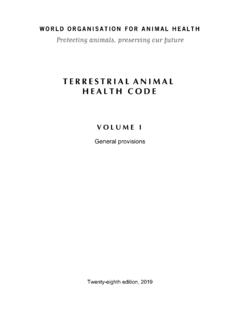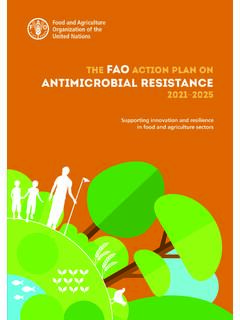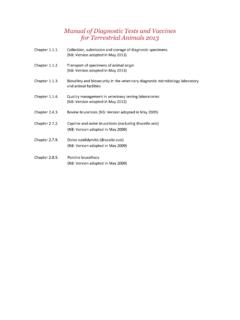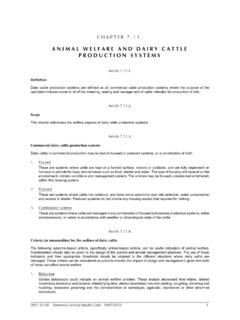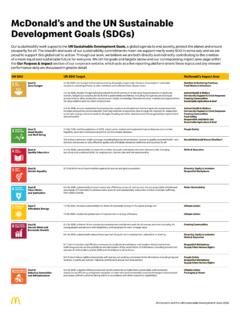Transcription of NATIONAL DISASTER MANAGEMENT GUIDELINES
1 Produced by: Magnum Books Pvt Ltd, +91-9811097054 NATIONAL DISASTER MANAGEMENT GUIDELINESMANAGEMENT OF BIOLOGICAL DISASTERSJuly 2008 NATIONAL DISASTER MANAGEMENT AUTHORITYGOVERNMENT OF INDIA xxiiNational DisasterManagement GuidelinesManagement ofBiological DisastersNational DISASTER MANAGEMENT GUIDELINES MANAGEMENT of Biological DisastersA publication of: NATIONAL DISASTER MANAGEMENT AuthorityGovernment of IndiaCentaur HotelNew Delhi 110 037 ISBN: 978-81-906483-6-3 July 2008 When citing this report the following citation should be used: NATIONAL DISASTER MANAGEMENT GUIDELINES MANAGEMENT of Biological Disasters, publication of NATIONAL DISASTER MANAGEMENT Authority, Government of 978-81-906483-6-3, July 2008, New NATIONAL GUIDELINES are formulated under the chairmanship ofLt Gen (Dr.)
2 Bhardwaj, PVSM, AVSM, VSM, PHS, (Retd.), Hon ble Member, NDMAin consultation with various stakeholders, regulators, service providers and specialistsin the subject field concerned from all across the DisasterManagement GuidelinesManagement ofBiological DisastersNational DISASTER MANAGEMENT AuthorityGovernment of IndiaivvContents vForeword ixAcknowledgementsxiAbbreviations xiiGlossary of Common TermsxviExecutive Summary xxiii 1 Introduction Agents as Causes of Mass Destruction of Biological Agents Perception Biology and Genetic Engineering and Biosecurity Disasters (Bioterrorism)
3 Of Biological Disasters Institution and Objectives of the GUIDELINES 9 2 Present status and and Policy Functional of NATIONAL DISASTER ManagementGuidelines MANAGEMENT of Biological Disasters28 Contentsvi 3 Salient Framework29 4 GUIDELINES for Biological DISASTER of Biological and Capacity Medical and Public health of Cooperation63 5 GUIDELINES for Safety and Security of Microbial of Handling Biorisks70 6 GUIDELINES for MANAGEMENT of Livestock to the animal Husbandry Sector due to Biological Threat from Exotic and Existing Infectious of Losses in the animal Husbandry status and for the MANAGEMENT of Livestock Disasters83 7 GUIDELINES for MANAGEMENT of from Exotic Features of an Organism to be used as a Bioweapon in theAgrarian from Indigenous status and for Biological DISASTER MANAGEMENT Agroterrorism 104 CONTENTSvii 8 Implementation of the GUIDELINES of the GUIDELINES Arrangements for Implementation
4 Model 113 9 Summary of Action Points 117 Annexures 123 Annexure-ACharacteristics of Biological Warfare Agents 123 Annexure-BVaccines, Prophylaxis, and Therapeutics forBiological Warfare Agents 125 Annexure-CPatient Isolation Precautions 133 Annexure-DLaboratory Identification of Biological Warfare Agents 135 Annexure-ESpecimens for Laboratory Diagnosis 137 Annexure-FMedical Sample Collection for Biological Threat Agents 138 Annexure-GOIE List of Infectious terrestrial animal Diseases 143 Annexure-HDisposal of animal Carcasses.
5 A Prototype 146 Annexure-IList of NATIONAL Standards on Phyto-sanitary Measures 148 Annexure-JImportant Websites 149 Core Group for MANAGEMENT of Biological Disasters150 Contact Us 156 CONTENTS viiiixVice ChairmanNational DISASTER MANAGEMENT AuthorityGovernment of IndiaFOREWORDThe preparation of NATIONAL GUIDELINES for various types of disasters, both natural and man-madeconstitutes an important component of the mandate entrusted to the NATIONAL DISASTER ManagementAuthority under the DISASTER MANAGEMENT Act, 2005.
6 In recent years, biological disasters includingbioterrorism have assumed serious dimensions as they pose a greater threat to health , environment andnational security. The risks and vulnerabilities of our food chain and agricultural sector to agroterrorism,which involves the deliberate introduction of plant or animal pathogens with the intent of underminingsocio-economic stability, are increasingly being viewed as a potential economic threat. The spectre ofpandemics engulfing our subcontinent and beyond poses new challenges to the skills and capacities of thegovernment and society.
7 Consequently, the formulation of the NATIONAL GUIDELINES on the entire gamut ofbiological disasters has been one of our key thrust areas with a view to build our resilience to respondeffectively to such emerging intent of these GUIDELINES is to develop a holistic, coordinated, proactive and technology drivenstrategy for MANAGEMENT of biological disasters through a culture of prevention, mitigation and preparednessto generate a prompt and effective response in the event of an emergency. The document containscomprehensive GUIDELINES for preparedness activities, biosafety and biosecurity measures, capacitydevelopment, specialised health care and laboratory facilities, strengthening of the existing legislative/regulatory framework, mental health support, response, rehabilitation and recovery, etc.
8 It specificallylays down the approach for implementation of the GUIDELINES by the central ministries/departments, states,districts and other stakeholders, in a time bound NATIONAL GUIDELINES have been formulated by members of the Core Group, Steering and ExtendedGroups constituted for this purpose, involving the active participation and consultation of over 243experts from central ministries/departments, state governments, scientific, academic and technicalinstitutions, government/private hospitals and laboratories, etc. I express my deep appreciations for theirsignificant contribution in framing these GUIDELINES .
9 I also wish to express my sincere appreciation forLt Gen (Dr.) Bhardwaj, PVSM, AVSM, VSM, PHS (Retd) for his guidance and coordination of theentire DelhiGeneral NC VijJuly 2008 PVSM, UYSM, AVSM (Retd)xxiMemberNational DISASTER MANAGEMENT AuthorityGovernment of IndiaACKNOWLEDGEMENTSN ational DISASTER MANAGEMENT GUIDELINES MANAGEMENT of Biological DISASTER are formulated bythe untiring efforts of the core group members and experts in the field. I would like to express my specialthanks to all the members who have proactively participated in this consultative process from time-to-time.
10 It is indeed the keen participation by the Ministry of health and Family Welfare, Ministry of HomeAffairs, Armed Forces Medical Services, Ministry of Defence, Department of health , Ministry of Railways,Ministry of Agriculture, various states and union territories, non-governmental organisations, and theprivate sector including corporate hospitals that has been so helpful in designing the format of thisdocument and provided valuable technical inputs. I would like to place on record the significant contributionmade by Lt Gen (Dr.) D. Raghunath, PVSM, AVSM (Retd), Lt Gen Shankar Prasad, PVSM, VSM(Retd), Dr.
